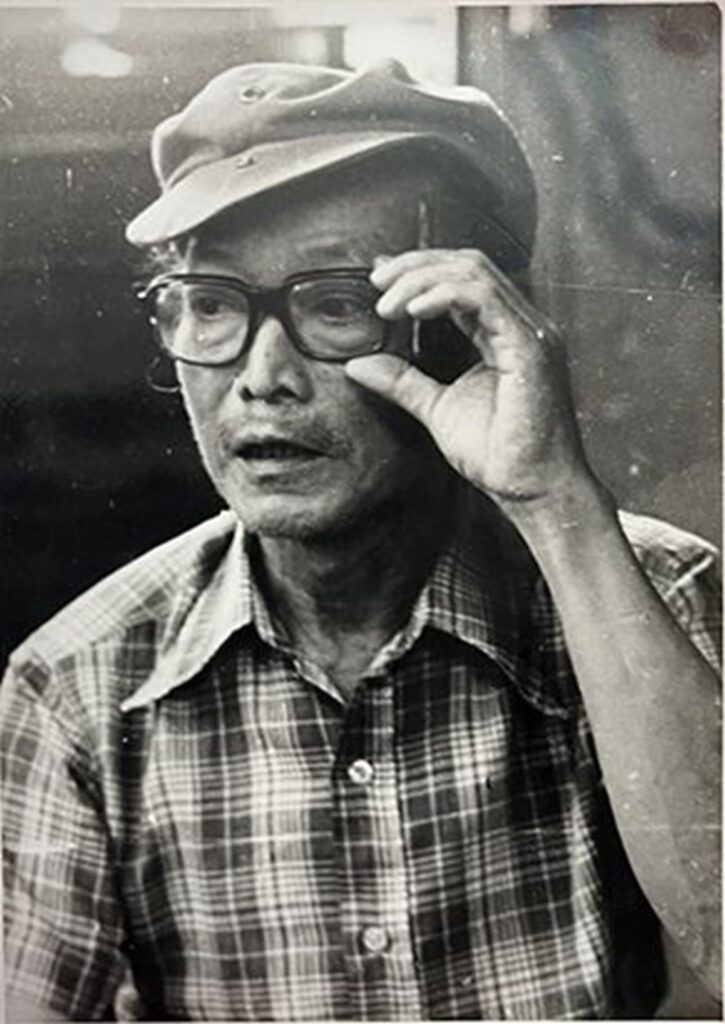Artist Nguyen Sang – a name synonymous with strokes that stir the soul, stands as an icon of modern Vietnamese art. Amid the turbulent tides of history, he was not just a gifted artist but also a soldier and a companion to the nation. His masterpieces, showcased in many a Vietnam art gallery, continue to captivate audiences with their emotional depth. This article delves deeply into the journey of artist Nguyen Sang, from his earliest sketches to his immortal legacy gracing art galleries, helping art enthusiasts better grasp his status as the “Foremost Sang” among the four masters of painting.
Nguyen Sang Biography: Journey from Southern Countryside to Hanoi Capital
The biography of artist Nguyen Sang begins in the fertile lands of southern Vietnam, a place that nurtured his sensitive artistic soul. Born on August 1, 1923, in Dieu Hoa village, My Tho province (now part of Tien Giang), he grew up in a family of educators – an environment that sparked his passion for creativity from his teenage years. Though he didn’t follow in the footsteps of teaching, artist Nguyen Sang displayed an innate talent for painting early on, transforming simple strokes into a quest to conquer the heights of art.
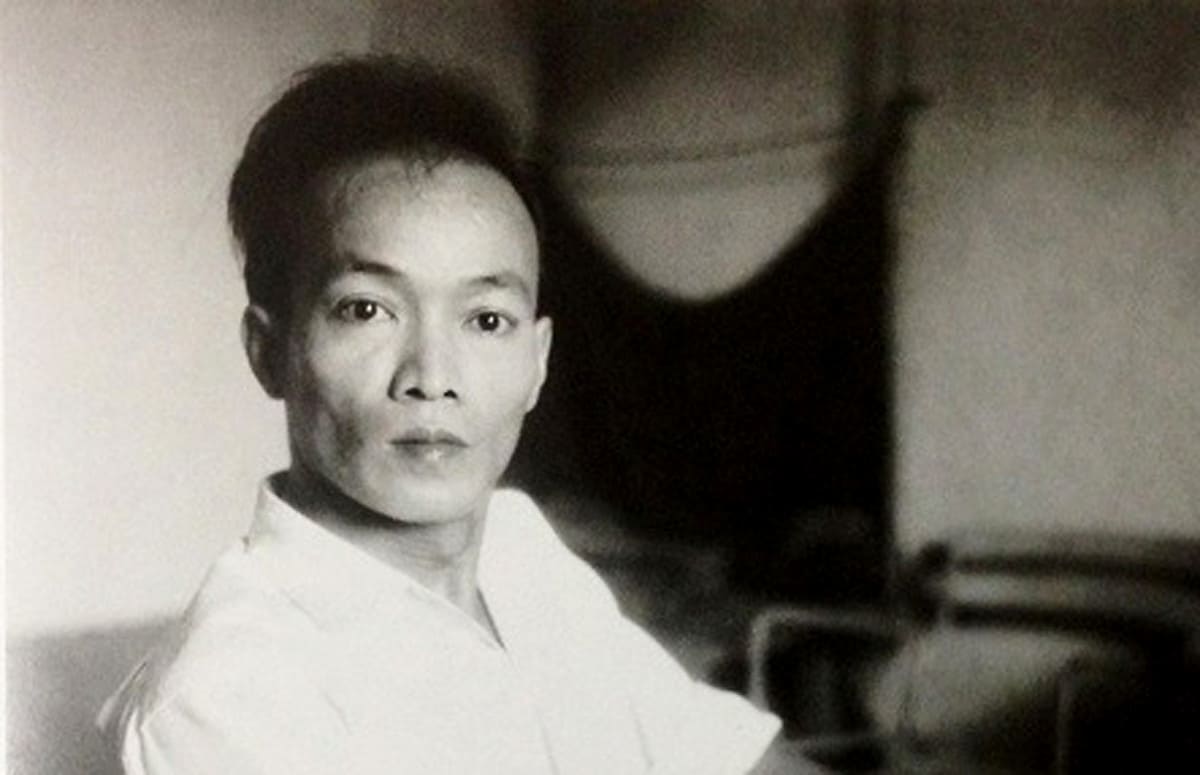
Discover Artist Nguyen Sang
Early Years of Study and Career Beginnings
From 1936 to 1938, the Nguyen Sang biography marks his first milestone at Gia Dinh School of Fine Arts, where he encountered the foundations of Western painting. Later, from 1941 to 1945, he attended the Indochina College of Fine Arts, class XIV – the premier talent forge in Southeast Asia at the time. These years not only honed his techniques but also shaped his unique style, blending Eastern traditions with European modernism.
-
1945: Joining the revolution in Hanoi – Artist Nguyen Sang swiftly immersed himself in the flow of history, using his brush to serve the resistance.
-
Late 1946: Heading to Viet Bac war zone – He lived like a soldier, capturing heroic moments through his drawings, marking a turning point from student to revolutionary artist.
-
Post-1954: Settling in Hanoi – No. 65 Nguyen Thai Hoc Street became his lifelong home, witnessing his explosion of creativity.
The Nguyen Sang biography is not just a personal story but a reflection of national spirit. He passed away on December 16, 1988, in Hanoi, leaving a profound void in the art world, yet his legacy endures through hundreds of works.
Family and Personal Influences on His Art
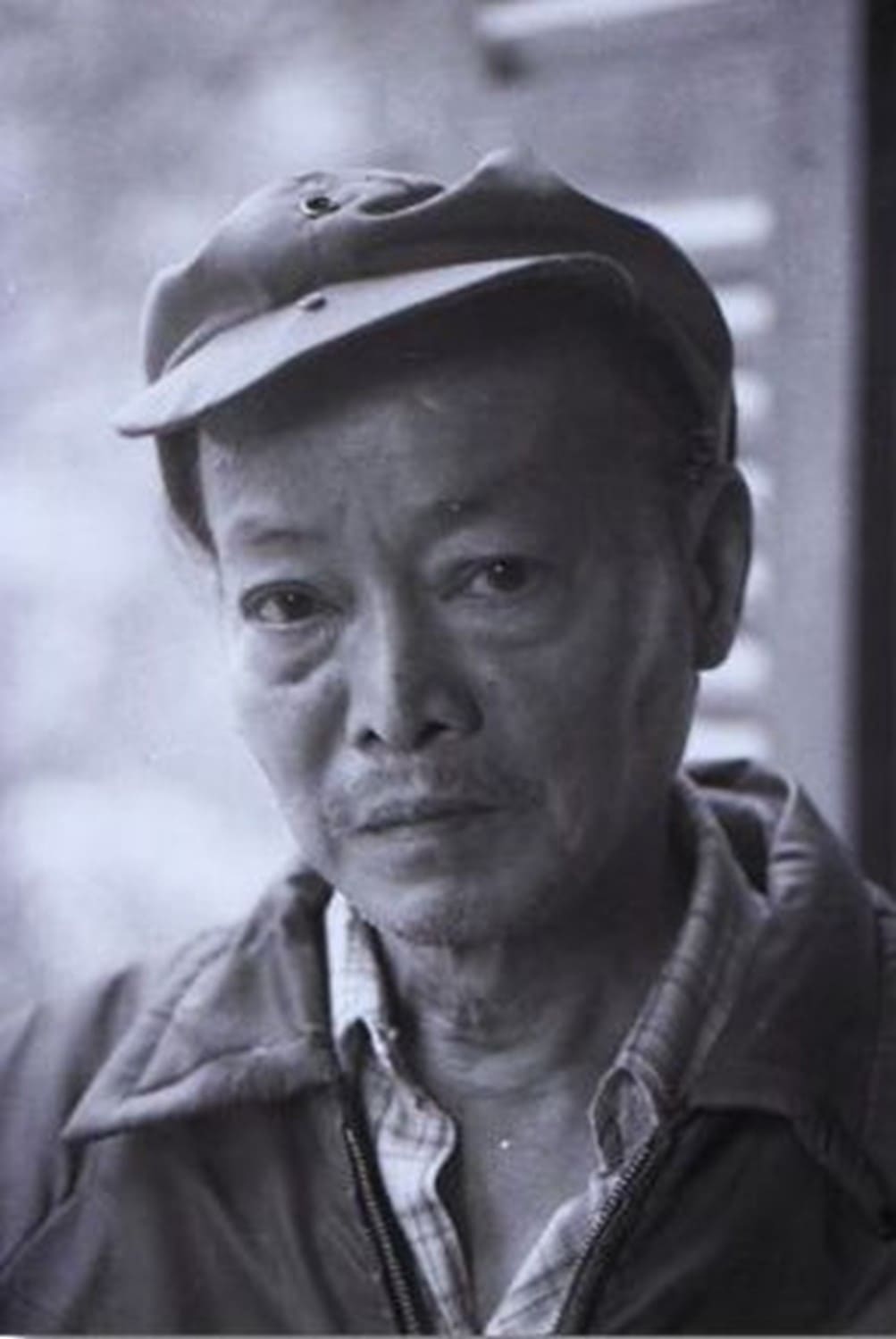
Portrait of Artist Nguyen Sang
The educator family of artist Nguyen Sang played a pivotal role, encouraging him to pursue his passion instead of traditional paths. His loved ones, especially his wife, Don Thu, often became inspirations for deeply insightful portraits. Influenced by the vast rivers and waters of southern Vietnam, he infused his paintings with intimacy and simplicity, making the Nguyen Sang biography a symbol of resilience and humanity.
Artist Nguyen Sang Career: From Resistance to Creative Pinnacle
The career of artist Nguyen Sang shines like a shimmering lacquer painting, intertwined with the heroic chapters of the nation’s history. As one of the “four masters” – Foremost Sang, Second Nghiem, Third Lien, Fourth Phai – he mastered diverse materials and innovated them, breathing modernity into Vietnamese art. This career divides into two main phases: heroic resistance and post-war creativity, each leaving an indelible mark.
Resistance Phase: Brushstrokes Serving the Nation
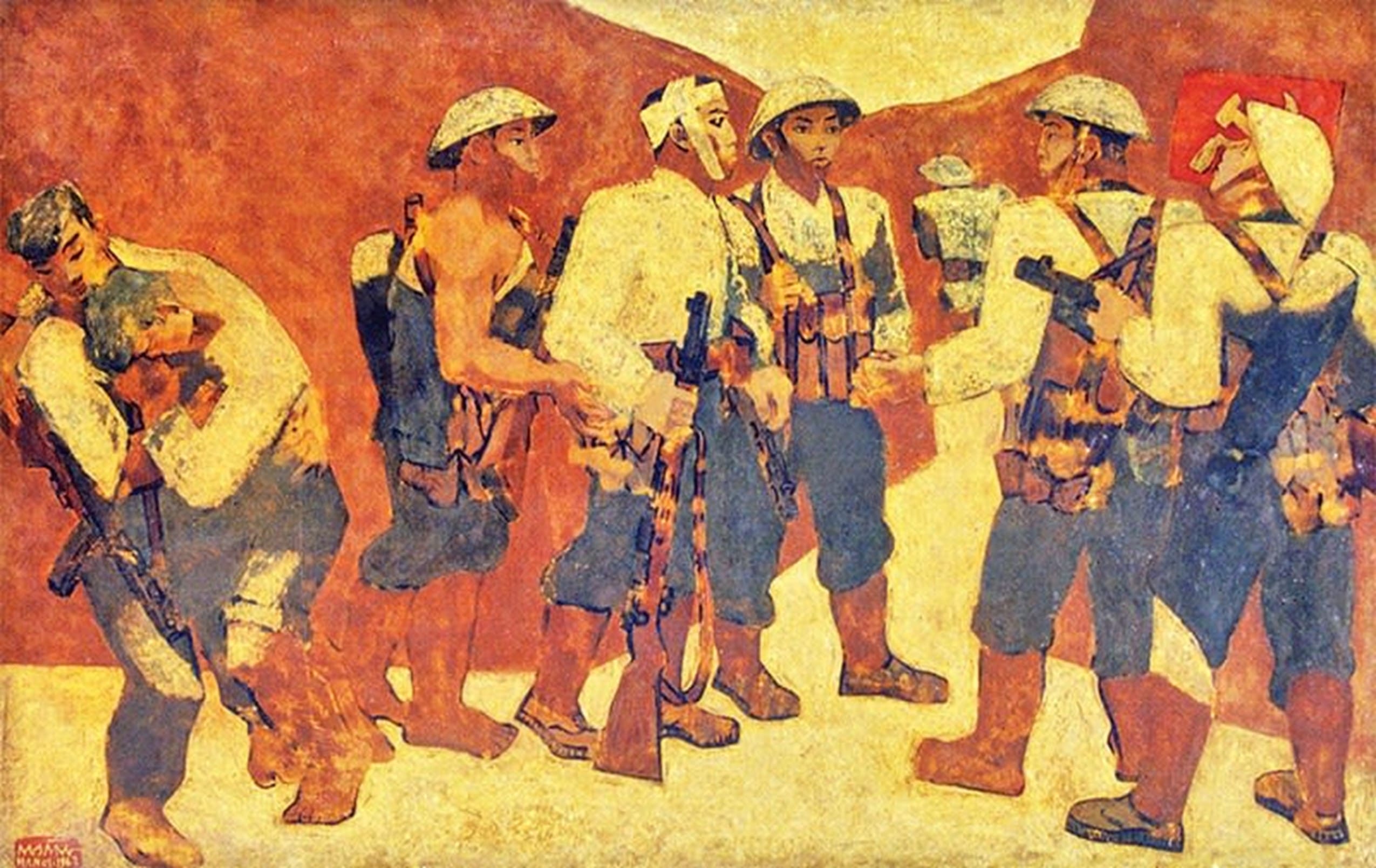
Artworks by Artist Nguyen Sang
From 1945 to 1954, the career of artist Nguyen Sang merged with the anti-French resistance. He joined the Dien Bien Phu Campaign alongside comrades like To Ngoc Van, Si Ngoc, and Duong Bich Lien, wielding painting as a spiritual weapon. Those humble years on the battlefield forged him into a committed artist, with strokes conveying the nation’s fierce vitality.
Here are some standout milestones in artist Nguyen Sang’s career during this period:
-
Designing the first revolutionary postage stamp (1945) – His “Uncle Ho” stamp became an icon, affirming his pioneering role in propaganda art.
-
Sketching in Viet Bac (1946-1954) – A series of sketches and paintings depicting soldiers, boosting national morale.
-
Participating in Dien Bien Phu (1954) – This event marked a peak, where he captured historical moments through an artistic lens.
In this phase, artist Nguyen Sang’s career was not just creation but dedication, turning brushstrokes into calls for patriotism that endure through time.
Post-War: Passion for Creation and Material Innovation
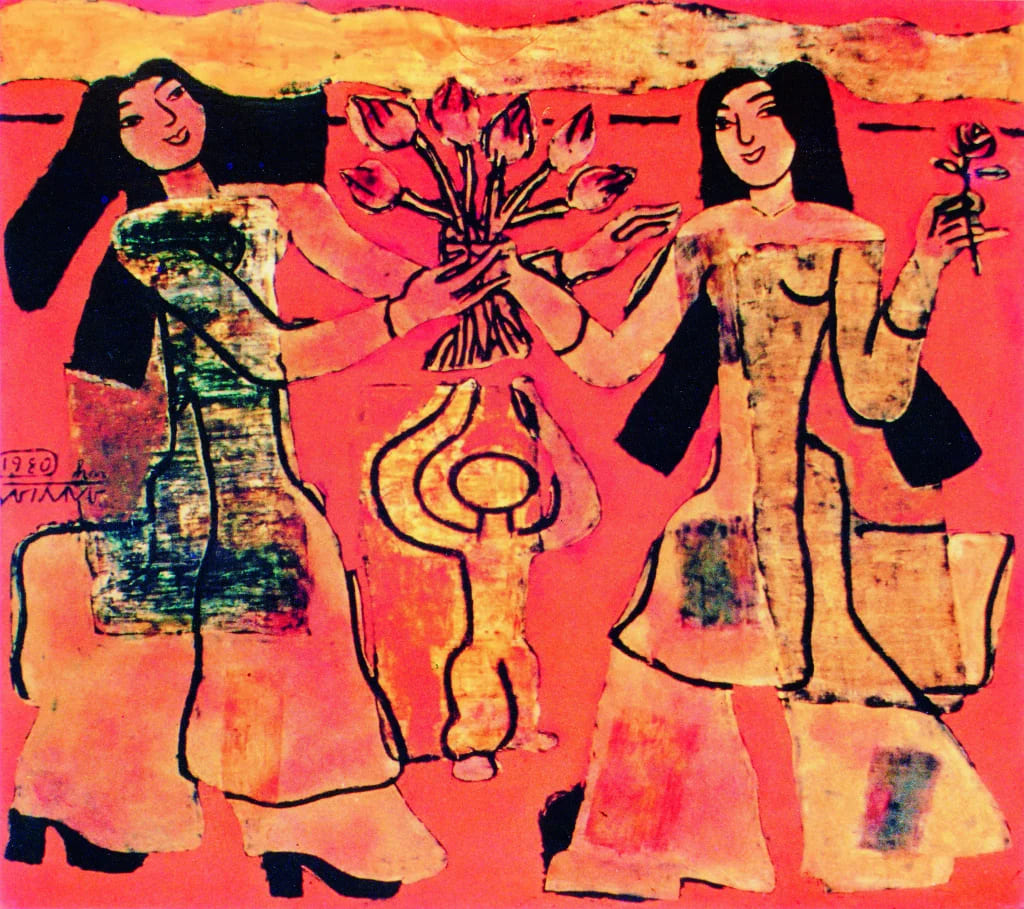
Paintings by Artist Nguyen Sang
After peace, artist Nguyen Sang’s career shifted to everyday themes while retaining revolutionary fire. He bonded with Hanoi, painting portraits of literary friends like To Hoai, Bui Xuan Phai, and Nguyen Tuan – works that not only resembled but captured their souls. Notably, he was passionate about the 12 zodiac animals on lacquer plates, blending folk elements with modernity.
Artist Nguyen Sang mastered oil and silk, but lacquer was his “kingdom.” He added new palette colors like gleaming gold and verdant green, creating rich depth. This career embodied perfect balance: European modernity fused with Vietnamese tradition, establishing him as a master innovator.
-
His greatest contribution: Lacquer – Series like “Wrestling” (1980) prove his talent in transforming ancient materials into contemporary icons.
-
Diverse themes – From young women by lotus ponds to ancient temple scenes, Nguyen Sang’s paintings always feel intimate and heart-stirring.
Through artist Nguyen Sang’s career, Vietnamese art was elevated, proving that true art stems from a loving heart and transformative talent.
Famous Artworks by Artist Nguyen Sang: Legacy That Built His Name
Famous artworks by artist Nguyen Sang are not just paintings but stories of people and the homeland. With hundreds of creations, he left a precious treasury, from war themes to daily life. Each piece carries a highly conceptual pictorial language, merging tradition and modernity, making them timeless in art history.
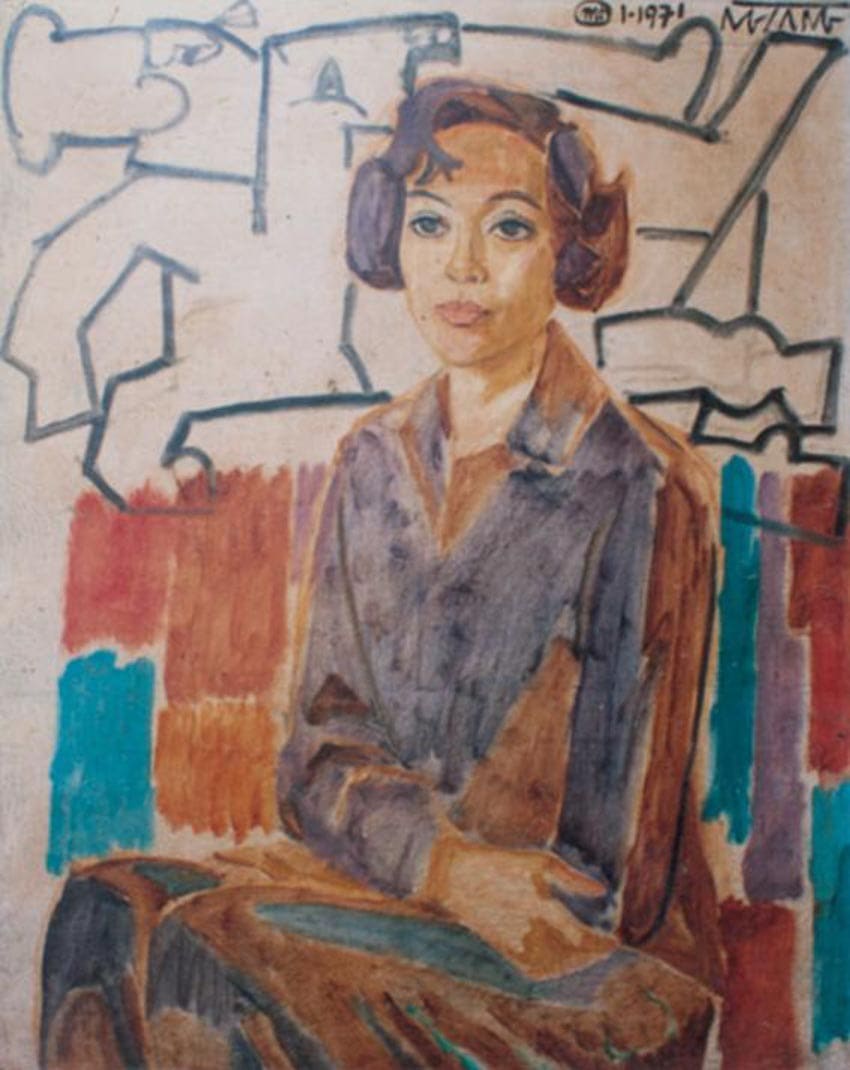
Some Artworks by Artist Nguyen Sang
Revolutionary-Themed Artworks: Power of Heroic Brushstrokes
Famous artworks by artist Nguyen Sang on resistance are always infused with fervent breath, portraying ordinary yet noble soldiers. Lacquer – a national material – was used to create emotional depth, turning paintings into historical symbols.
Here are the top 5 standout works:
-
Joining the Party at Dien Bien Phu (1963, lacquer) – Created exactly nine years after the victory, the painting recreates a sacred moment in the trenches with robust strokes and warm colors.
-
Youth of the Bronze Citadel (1978, lacquer) – Depicting the young generation on the front lines, showcasing vibrant life through shimmering lacquer layers.
-
Pac Bo (oil) – Capturing the deep mountain forests where Uncle Ho worked, with mystical green tones evoking the revolutionary journey.
-
Buffalo Fighting (lacquer) – Blending folk themes, the painting bursts with the fervent energy of village festivals.
-
Wrestling (oil) – Strong, vivid strokes honoring the power of working people.
These works are not only technically masterful but convey profound humanistic messages, solidifying Nguyen Sang’s position among the four masters.
Portrait and Everyday Artworks: Intimacy of a Master
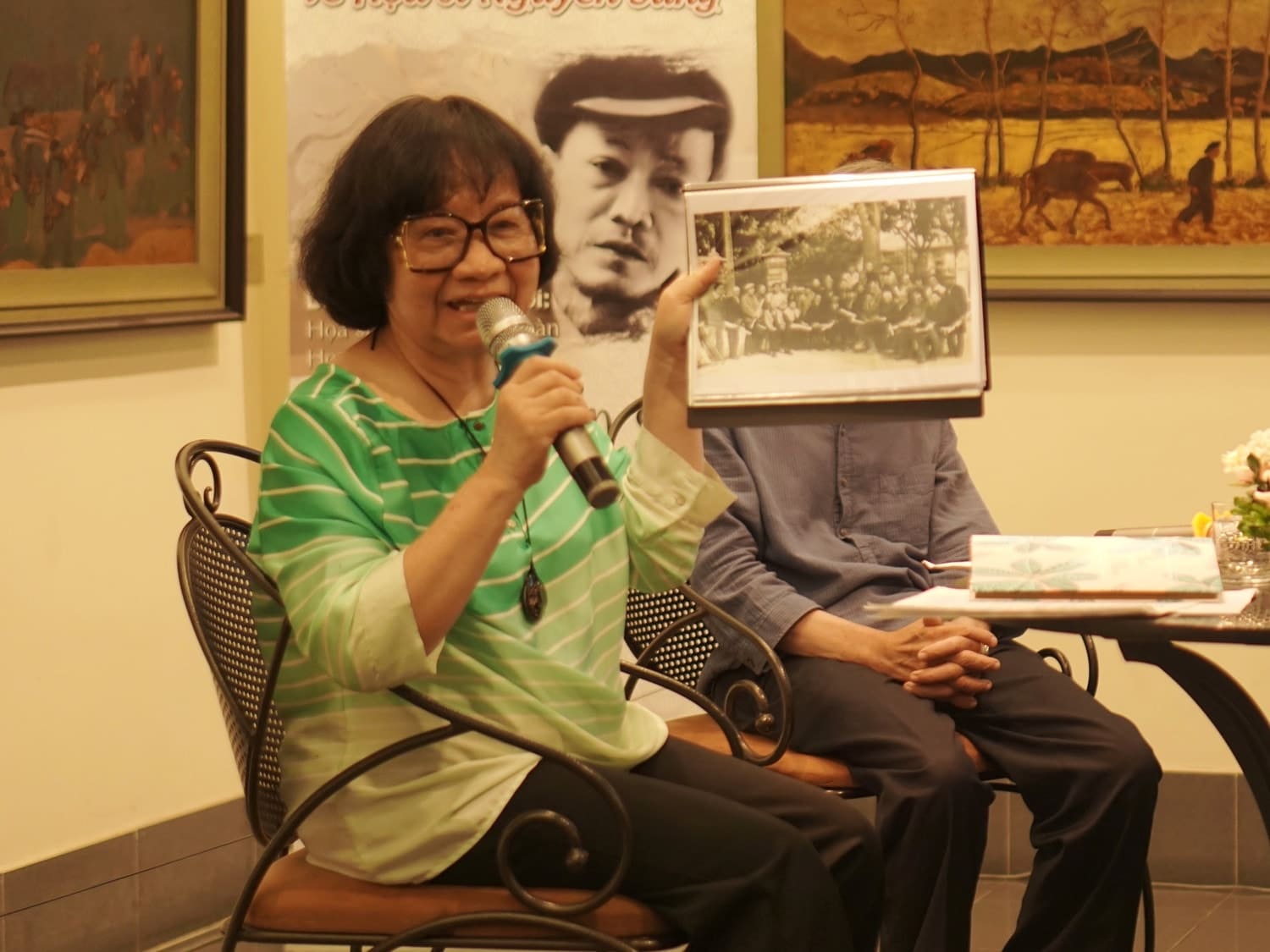
Remembering Artist Nguyen Sang
Beyond war, famous artworks by artist Nguyen Sang shine in portraits, where he was a maestro at depicting character. Pieces like “Portrait of Mrs. Don Thu (1971, oil)” not only capture likeness but reveal the gentle resilience of Vietnamese women.
He also cherished themes of women and flowers, such as:
-
Young Woman by Lotus Flowers – A shy maiden by the lotus pond, with soft colors evoking Eastern beauty.
-
Artist and Model – Exploring creative relationships with free, modern strokes.
-
Young Woman in Banana Garden – Simple rural scenes breathing the air of his southern childhood.
Nguyen Sang’s temple paintings like “Pho Minh Pagoda” exude ancient grandeur, blending mystery and reality. Overall, famous artworks by artist Nguyen Sang span materials from oil to silk, always maintaining simplicity without sterility, thanks to the artist’s sincere heart.
Artist Nguyen Sang Painting Style: Secret to Blending Modern and Traditional
Artist Nguyen Sang’s style is a unique fusion of European art and national essence, creating a distinct pictorial language. He never strayed from roots but always innovated, especially in lacquer – his greatest contribution. A rich palette and versatile strokes make his paintings moving, never hollow.
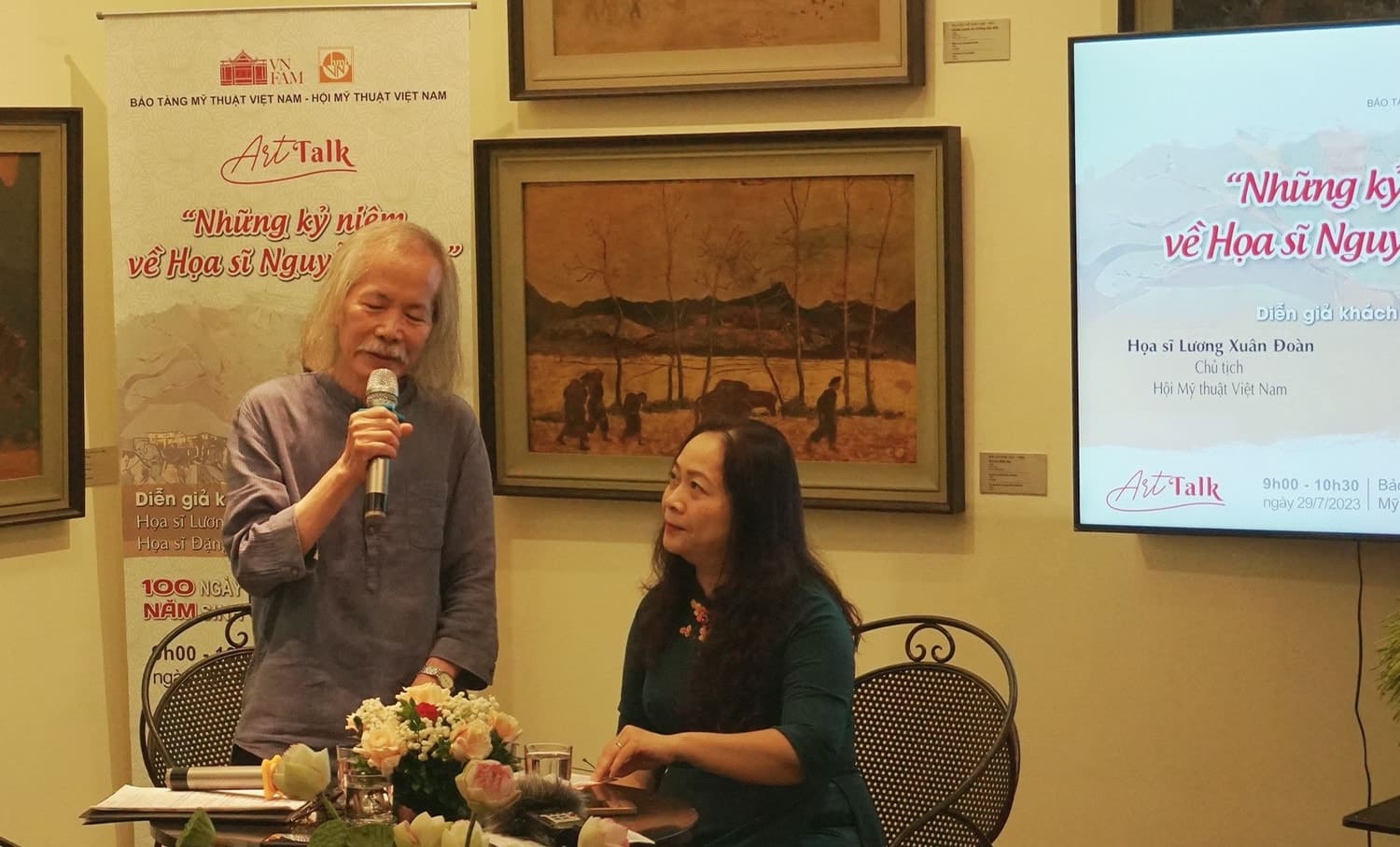
Art of Artist Nguyen Sang
Lacquer: Pinnacle of Innovation
Artist Nguyen Sang’s lacquer work is acclaimed for adding new colors, transforming ancient materials into modern forms. Layered coats create infinite depth, as in “Wrestling” (1980), where abstract forms evoke human fate.
-
Style strengths: Combining Euro-Asian techniques for harmony between abstraction and realism.
-
Influence: Inspiring future generations, as seen in contemporary art exhibitions.
Legacy and Significance of Artist Nguyen Sang in Vietnamese Art
Artist Nguyen Sang was not just a renowned painter but a pioneer in modernizing Vietnamese painting. His legacy – hundreds of works on war and daily life – continues to inspire, affirming his “Foremost Sang” status among the four masters. Through his paintings, he narrates the nation’s story, reminding future generations of humanistic values and creativity.
In today’s Vietnamese art scene, artist Nguyen Sang’s style remains a valuable lesson: true art must be committed, intimate, and eternal. Those visiting a Hanoi art gallery or exploring Vietnamese paintings can find endless inspiration in him, turning each stroke into a whisper of history.

